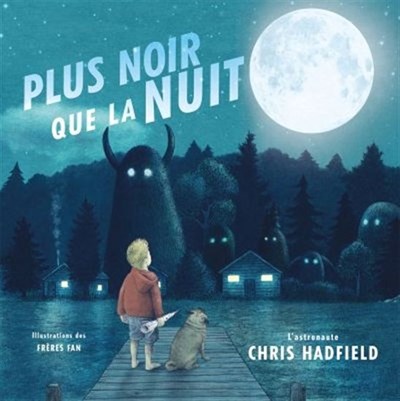Il est déjà temps de commencer à se préparer pour la saison hivernale.
Selon le Règlement numéro 601-18, les abris d’hiver tant pour les véhicules que pour les piétons à l’entrée d’un bâtiment, ainsi que les clôtures à neige et autres protections hivernales sont autorisés dans toutes les zones, du 1er octobre au jour correspondant au 3e lundi du mois de mai de l’année suivante.
Nombre
Le nombre d’abris pour automobile autorisé est de deux (2) pour une résidence unifamiliale isolée, un (1) par logement pour un bâtiment abritant plus d’un logement et un (1) par bâtiment principal pour tout autre usage.
Localisation
a) Un abri d’hiver ne peut être érigé sur un terrain vacant.
b) L’abri d’hiver peut être érigé en cour avant que sur un espace de stationnement ou sur l’allée d’accès véhiculaire ou piétonnier. L’abri d’hiver peut être situé en cour latérale ou arrière.
c) Un abri d’hiver doit être distant d’au moins 3 m de la bordure de rue ou du pavage, sans jamais empiéter l’emprise de rue. Dans le cas d’un terrain dans la zone réservée aux maisons mobiles, cette norme est réduite à 1,5 m.
d) L’abri d’hiver doit être situé à au moins 2 m d’une ligne latérale et 2 m minimum de la ligne arrière.
e) Un abri d’hiver ne peut être installé à moins de 3 m d’une borne-fontaine ni être fixé à celle-ci.
Structure
a) La structure d’un abri d’hiver peut être faite de bois ou de métal. Les éléments de structure ou de charpente ne doivent pas être apparents.
b) Les abris d’hiver doivent être revêtus de façon uniforme de toile conçue spécialement à cette fin (ex. : fabrène) ou de panneaux de bois peints ou teints; l’usage de polythène est prohibé. Un seul type de matériau de revêtement autorisé doit être utilisé par abri d’hiver. Il est interdit d’ériger tous types d’abris ou de bâtiments militaires comme abri d’hiver.
Dispositions particulières
a) Une construction complémentaire annexée (abri d’auto, galerie, porche,
etc.) peut être fermée durant la même période et avec les matériaux autorisés précédemment.
b) Les abris d’hiver incluant une structure et un recouvrement ainsi que les
clôtures à neige doivent être démontés et enlevés dès la fin de la période
autorisée à chaque année et être remisés à un endroit non visible de la rue.
c) Tout abri d’hiver doit être tenu propre, être bien ancré et bien entretenu
(absence de toile déchirée, non attachée, etc.).
d) Un abri d’hiver ne peut être utilisé comme une remise ou pour de l’entreposage d’éléments autres que le stationnement de véhicules.
Winter shelters, snow fencing and winter protection
It’s already time to start preparing for the winter season.
Pursuant to By-law 601-18, winter shelters for both vehicles and pedestrians at the entrance of a building, as well as snow fencing and other types of winter protection are allowed in all areas, from October 1st on the day corresponding to the third Monday in May of the following year.
Number
The number of car shelters allowed is two (2) for an isolated single-family residence, one (1) per unit for a building with more than one unit and one (1) per main building for any other use.
Location
a) A winter shelter may not be built on a vacant lot.
b) The winter shelter may be erected on a front yard, in a parking space, or on a car or pedestrian access way. The winter shelter may be located in a side or back yard.
c) A winter shelter must be located at least 3 m from the side of the road or sidewalk, without ever going into the street. In the case of a piece of land in a mobile home area, this requirement is reduced to 1.5 m.
d) The winter shelter must be located at least 2 m from the side and at a minimum of 2 m from the back.
e) A winter shelter may not be installed less than 3 m from a fire hydrant, or be attached to it.
Structure
a) The structure of a winter shelter can only be made of wood or metal. The structure or framing must not be apparent.
b) Winter shelters must be covered evenly with a canvas specifically designed for this purpose (e.g., Fabrene) or with painted or dyed wooden paneling; the use of polythene is prohibited. Only one type of authorized material should be used to cover the winter shelter. It is prohibited to erect any kind of military shelter or building as winter shelter.
Special Provisions
a) An additional adjacent construction (carport, porch, etc.) can be closed during that same period using the authorized materials stated above.
b) Winter shelters including a structure and a cover material as well as snow fencing must be dismantled and removed at the end of the period authorized for that purpose each year and be stored in a location not visible from the street.
c) All winter shelters must be kept clean, well anchored to the ground and maintained adequately (canvas must not be torn and unattached, etc.).
d) A winter shelter may not be used as a shed or for the storage of items other than the parking of vehicles.












